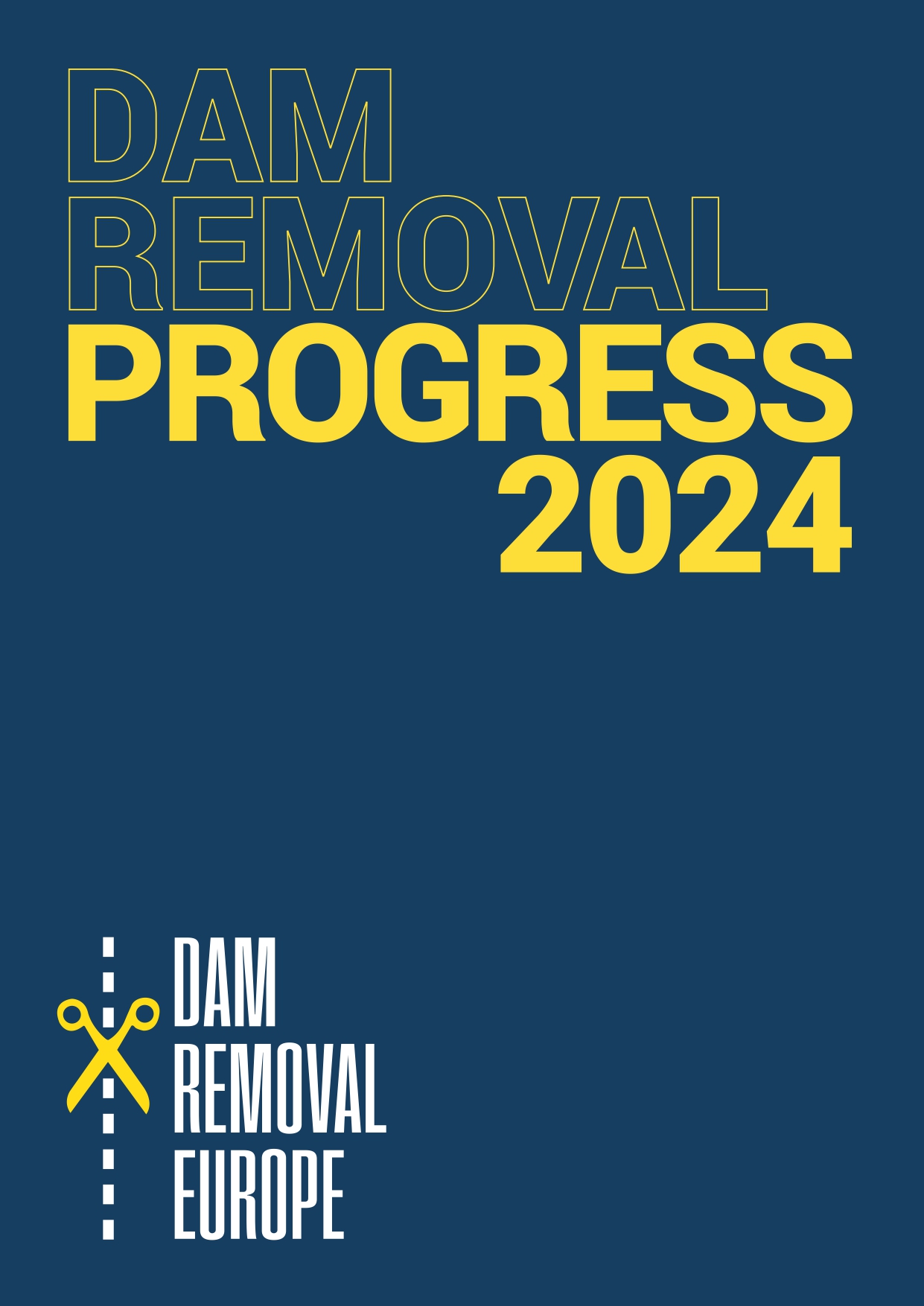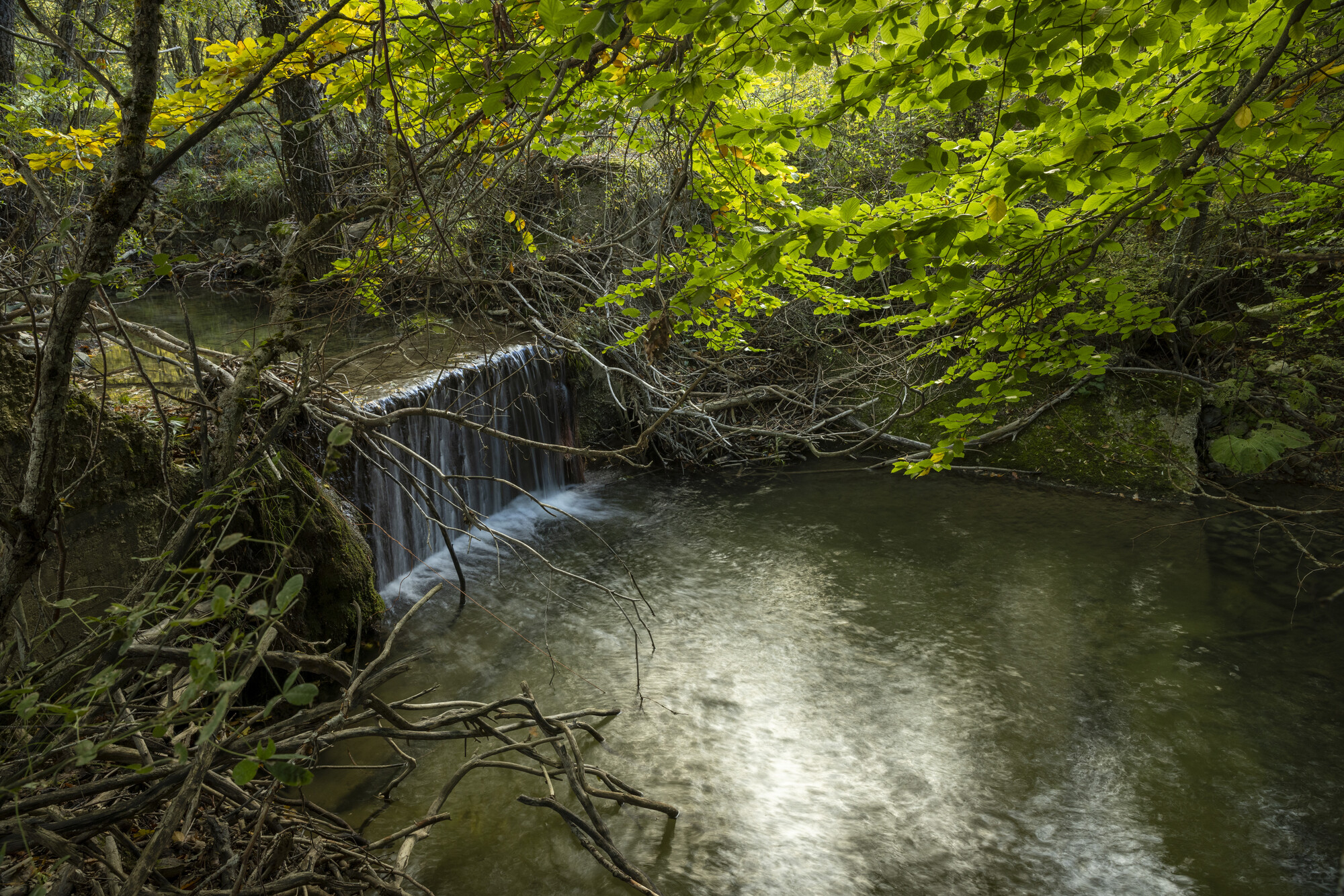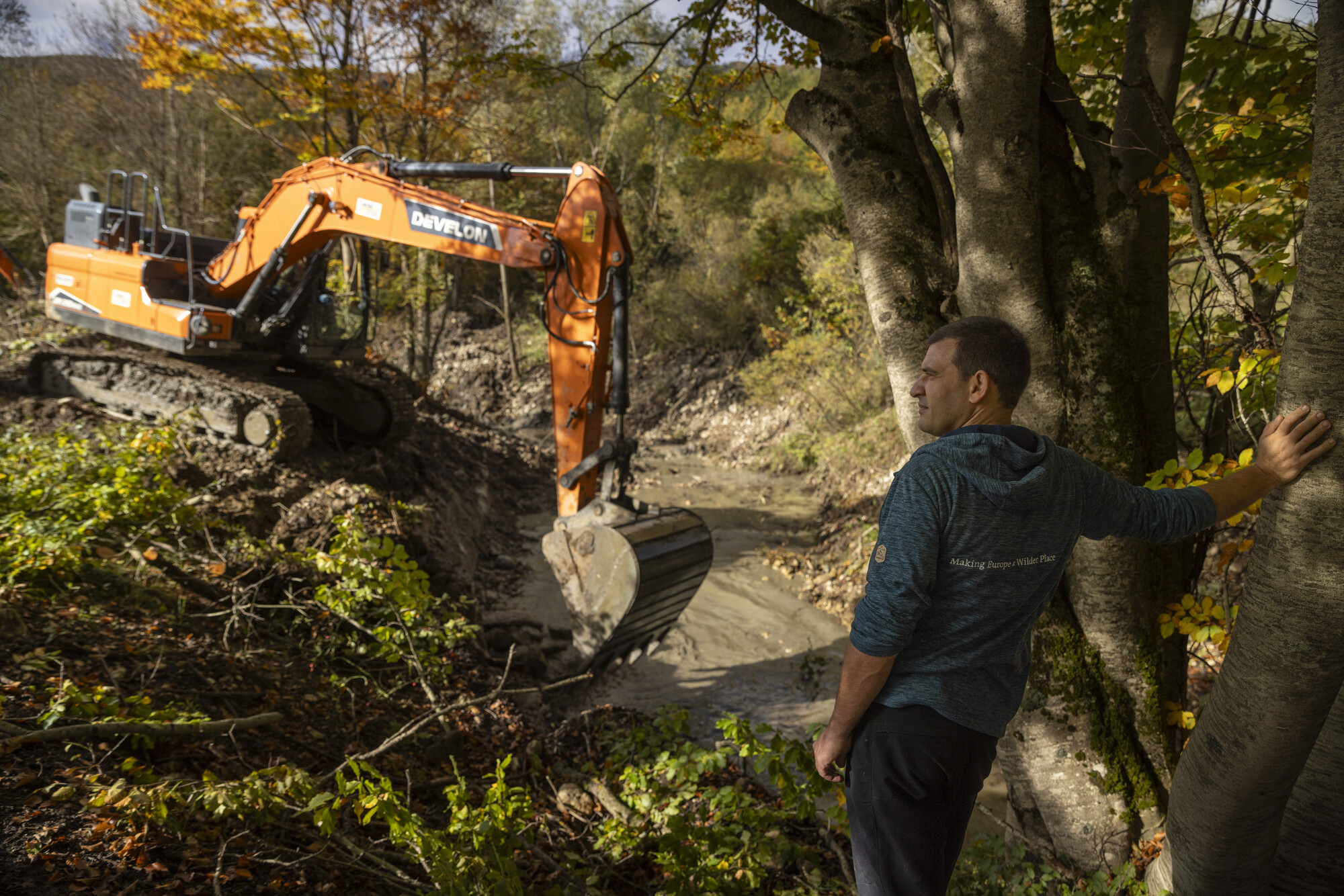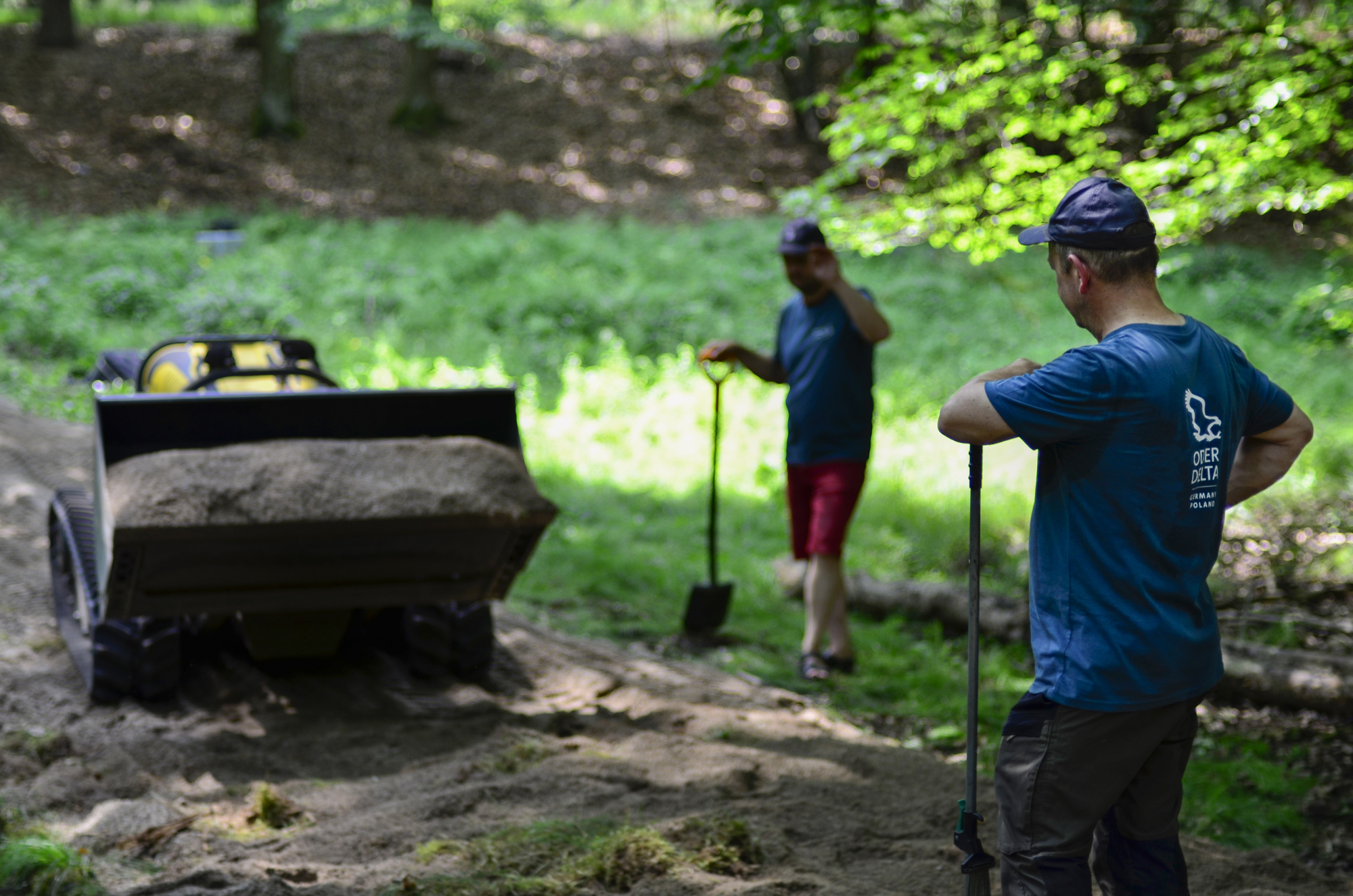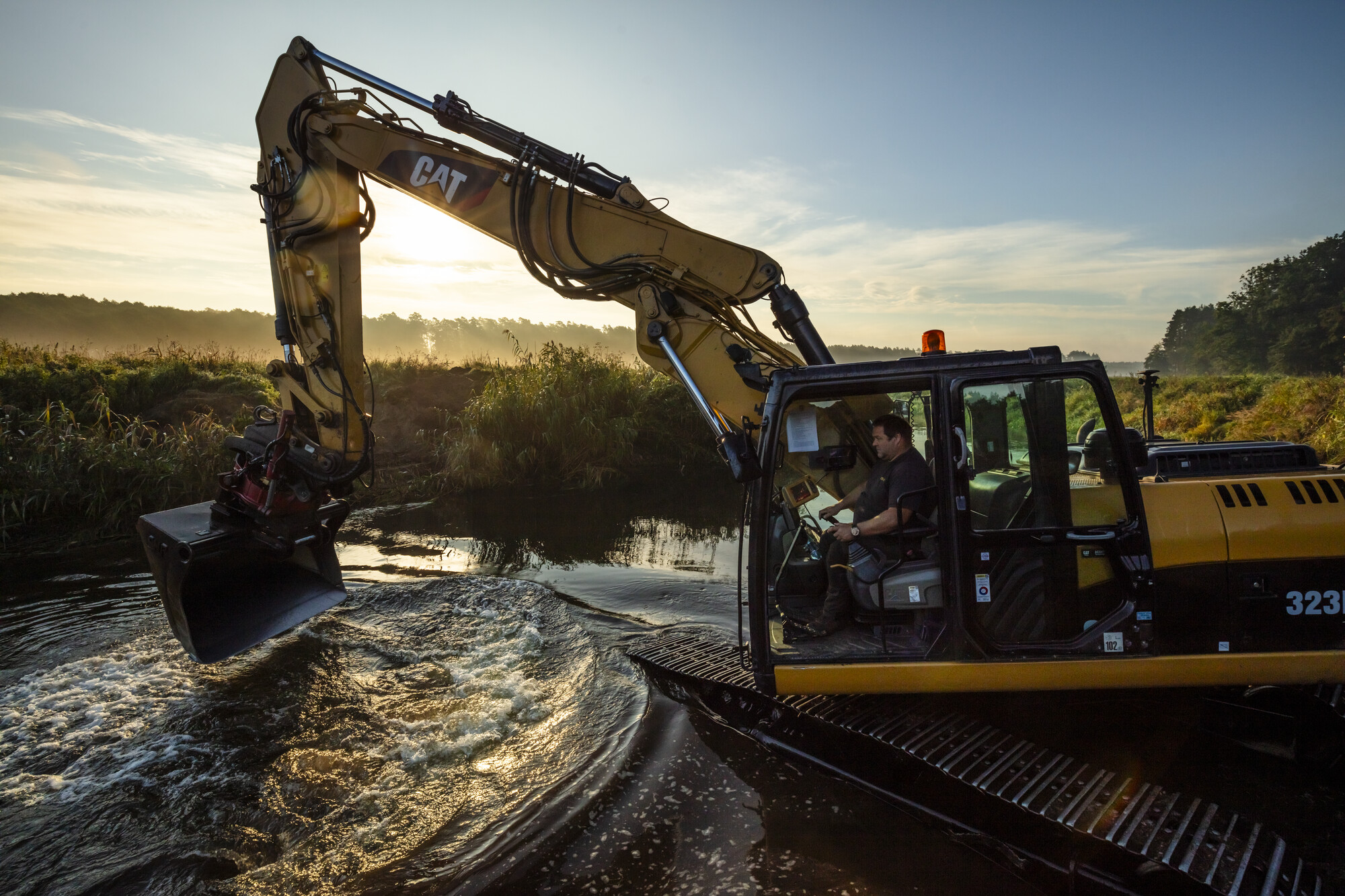The removal of dams and other barriers is one of the best ways to rewild rivers and enhance the benefits they deliver to people and nature. Dam Removal Europe’s latest progress report – which reveals a record number of dams were removed from European rivers in 2024 – shows the European dam removal movement continuing to gather pace.
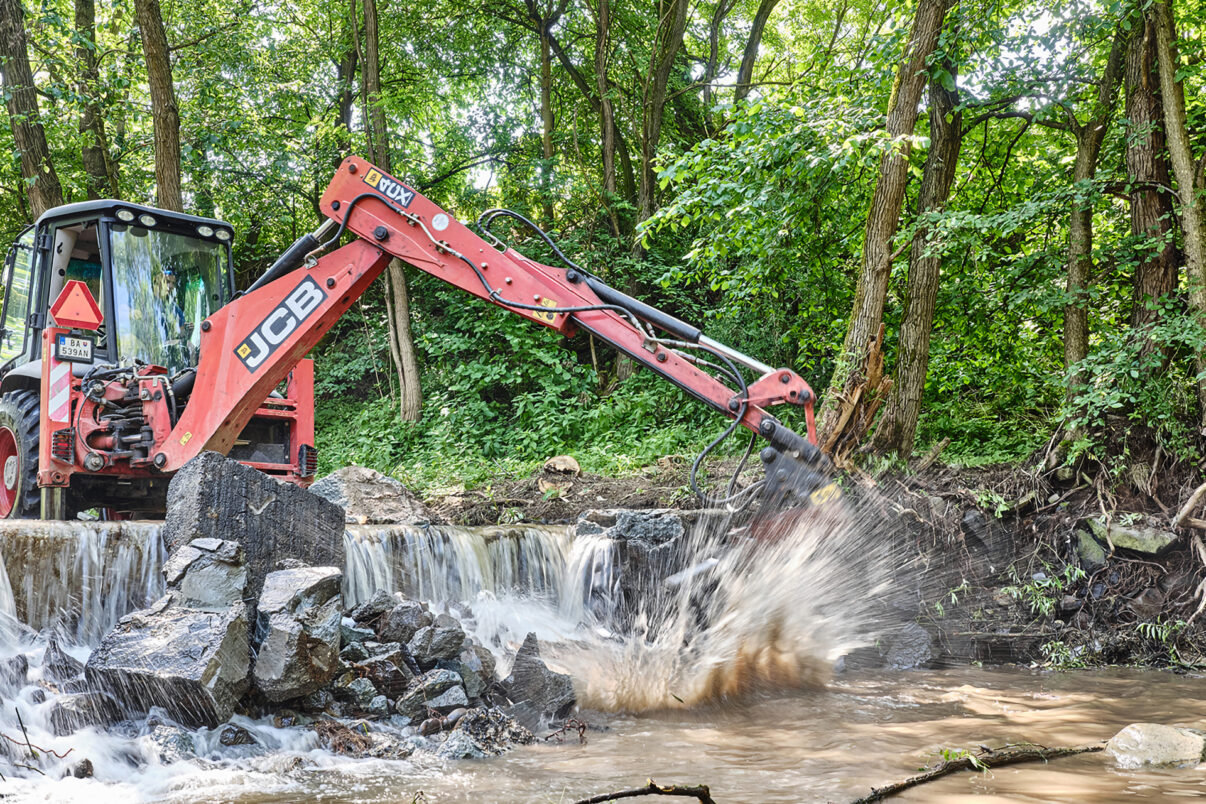
The importance of free-flowing rivers
Rivers harbour some of the richest biodiversity on earth and provide an array of benefits to people. Healthy, free-flowing rivers, which are well-connected with surrounding landscapes, offer a wide range of habitats for wildlife species. Such “waterscapes” also help to purify water and reduce the risk of downstream flooding in times of heavy rainfall, and are more resilient to the effects of climate change.
And the benefits of rewilding rivers aren’t confined to freshwater ecosystems. River rewilding has far-reaching impact that extends all the way to the sea. As we reconnect waterways we also open up migration routes for fish such as salmon and sturgeon, which need access to spawning grounds upstream and healthy coastal waters downstream. By enabling fish and other aquatic species to move freely again, we can breathe new life into entire ecosystems – from source to sea. Restoring the natural flow of rivers enhances the health of estuaries, saltmarshes, and coastal wetlands – habitats that are rich in biodiversity and also act as carbon sinks, flood buffers, and nurseries for marine life.
Removing dams to restore the natural flow of water in rivers benefits migrating fish populations.
Sadly, the majority of European rivers are in poor health, with only a few truly wild stretches remaining. Since the beginning of the twentieth century, most have become polluted, channelised, and choked by dams and weirs. Many of these barriers, some hundreds of years old, provide irrigation, energy, and other benefits. Others are abandoned and obsolete. Regardless of their usefulness, the presence of these structures has a hugely negative impact on fish, other wildlife, and people, significantly degrading river ecosystems by causing habitat loss and fragmentation, altering the distribution of sediments and nutrients, interfering with natural flooding, and concentrating pollutants.
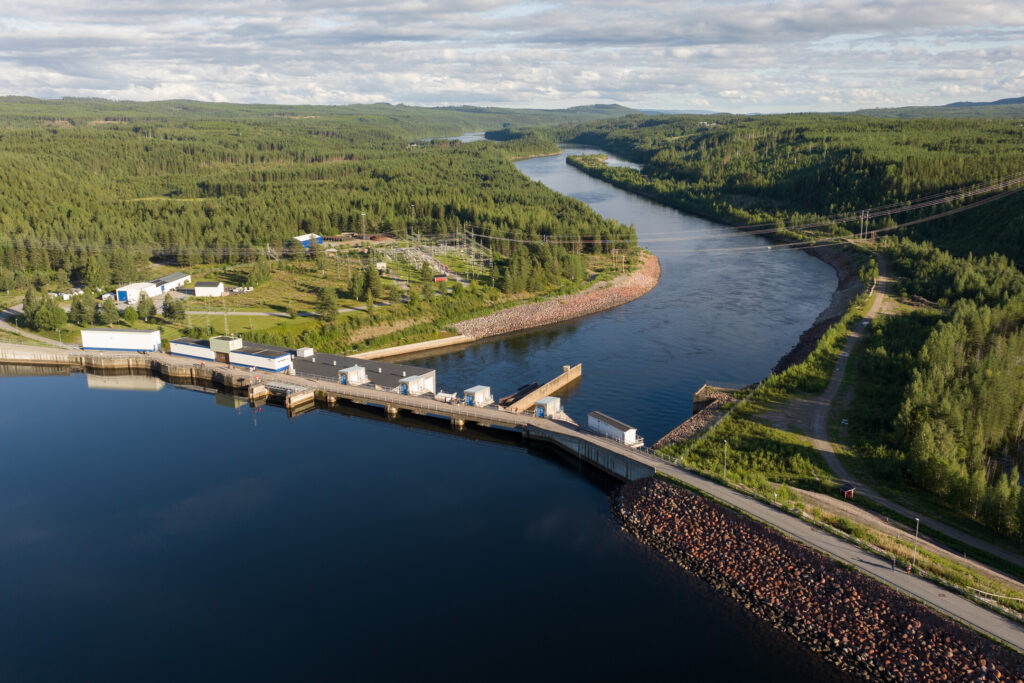
A record year for dam removal
The good news is that removing dams and other barriers has already proven to be one of the most efficient and cost-effective ways of rewilding rivers, with dynamic, natural processes such as the free flow of water and flooding returning them to health. By giving them freedom again, liberating rivers through dam removal enhances the benefits they can deliver to nature and people.
The even better news is that the momentum behind dam removal in Europe continues to grow. A new annual report has just been published by Dam Removal Europe, a burgeoning, European-wide coalition driven by six organisations – WWF, The Rivers Trust, The Nature Conservancy, the European Rivers Network, Rewilding Europe, and Wetlands International Europe – that are working to restore European rivers by removing old and obsolete dams and weirs. This reveals that a remarkable 542 barriers were removed across 23 European countries in 2024, up 11% on the year before. These removals led to the reconnection of over 2900 kilometres of rivers, boosting biodiversity, restoring ecosystems, and enhancing climate resilience. Eight more countries removed barriers than in 2023, with Bosnia and Herzegovina, Croatia, Czechia, and Turkey officially removing their first barriers ever, while Finland led the way with the removal of 138 barriers.
“It is fantastic to see countries such as Finland and France removing over 100 barriers each and particularly inspiring to see so many new countries joining the dam removal movement,” says Rewilding Europe Executive Director Frans Schepers. “We need every European country dismantling barriers at scale if we are to truly rewild our rivers – and if the EU Nature Restoration Law target of restoring at least 25,000 kilometers of European rivers to a free-flowing state by 2030 is to be achieved.”
“We need every European country dismantling barriers at scale if we are to truly rewild our rivers – and if the EU Nature Restoration Law target of restoring at least 25,000 kilometers of European rivers to a free-flowing state by 2030 is to be achieved.”
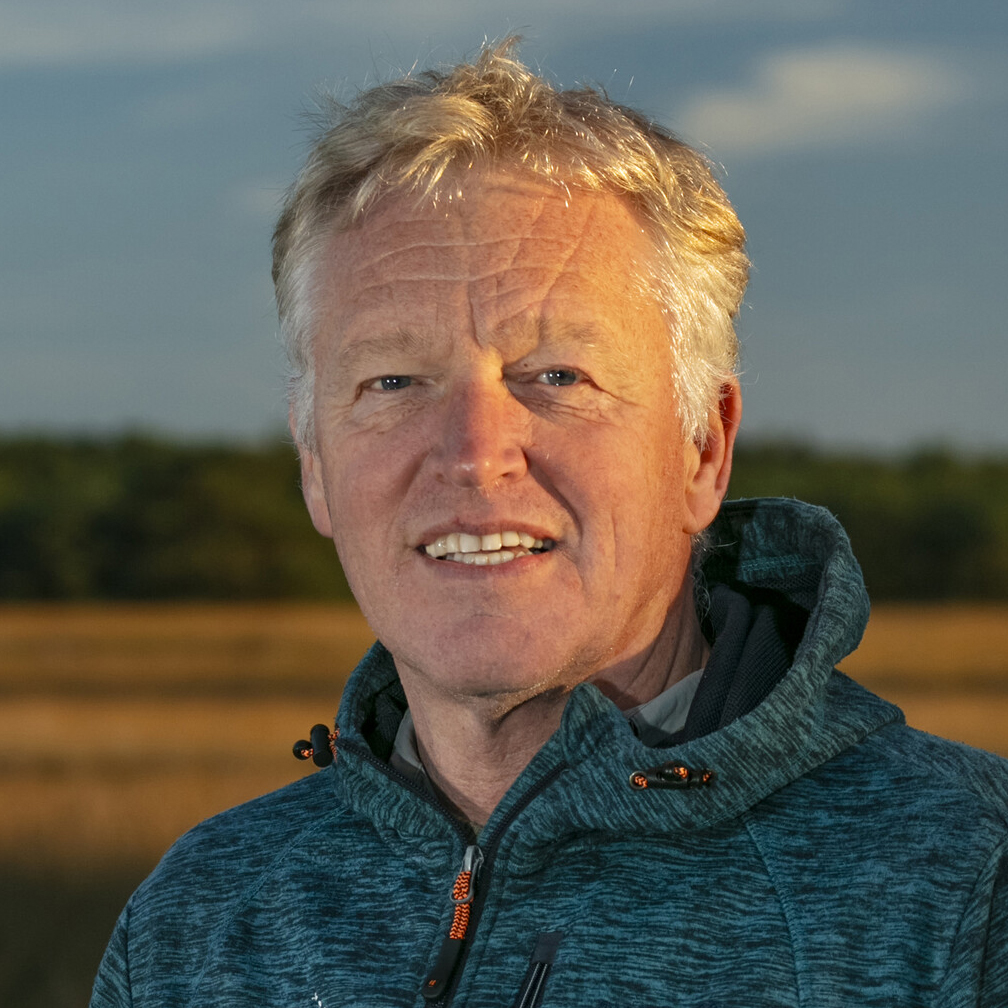
Frans Schepers
Rewilding Europe’s Executive Director
Breaking barriers in our landscapes
With climate change intensifying floods and droughts, we urgently need a new relationship with water – accepting it into our landscapes again, and rewilding it where we can. This is why Rewilding Europe is working to restore rivers and the areas around them in many of our own rewilding landscapes. As with all our practical efforts, we hope that by demonstrating how rivers can be rewilded, and the benefits this delivers, we can inspire others to follow in our footsteps.
The latest Dam Removal Progress Report showcases work to remove barriers in two of Rewilding Europe’s rewilding landscapes – the Central Apennines in Italy, and the Oder Delta, which is divided between Poland and Germany. In November 2024, the Rewilding Apennines team oversaw the removal of five barriers on the Giovenco River, supported by funding from the Open Rivers Programme. These efforts mean an 11-kilometre stretch of the waterway is now flowing freely again for the first time in many decades, breathing new life into the landscape and delivering benefits to local communities.
And in June and July last year, in the Polish part of the Oder Delta rewilding landscape, the Rewilding Oder Delta team and partners oversaw efforts to remove two weirs on waterways in the Ina River catchment. Complemented by work to recreate more natural riverbed conditions, this will enhance fish migration and reproduction along 20 kilometres of river, with local communities, foresters, and farmers also benefitting from the healthier, free-flowing waters.
Let’s scale up river rewilding together
At Rewilding Europe we want to see river rewilding scaled up across Europe, with the removal of barriers playing a key role. In addition to the work in our own landscapes, we also support an increasing number of river rewilding initiatives through the European Rewilding Network, empowering them with the tools and expertise to maximise the impact of their own efforts.
Regardless of age or background, everyone can contribute to the rewilding of European rivers.
- Support us as we work to rewild rivers across Europe, and help others do the same
- Help to identify and track the barriers on Europe’s rivers, as the first step in the removal process
- If you’re looking to remove a dam or other riverine barrier, the Dam Removal Europe website is packed with useful information

